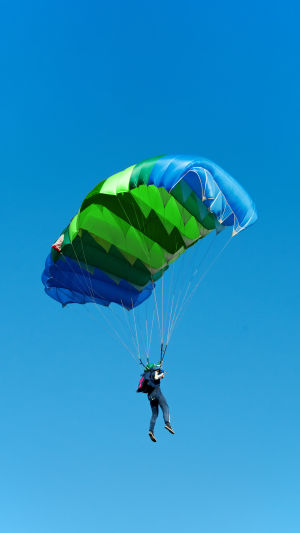Skydiving is an exhilarating and thrilling activity that involves jumping from a high altitude and free-falling before opening a parachute to slow down the rate of descent and land safely in a designated area.
This extreme sport is not for the faint-hearted and requires bravery, courage, and a sense of adventure.
Before embarking on a skydiving adventure, there are several important factors to consider. First and foremost, safety is paramount, and all necessary precautions must be taken to ensure a safe and enjoyable experience. For instance, electronic devices and body accessories like necklaces, bracelets, and earrings should not be worn during the jump. Additionally, a high index sunscreen should be applied to protect the skin from harmful UV rays.
Another crucial aspect to consider is attire. Skydivers are required to wear fully enclosed shoes such as sneakers or running shoes with laces. High heels, sandals, or boots with a heel are not allowed. The clothing worn should be comfortable and without excessive buttons, with shorts being suitable for summer jumps and jeans or athletic pants for winter jumps. A long-sleeved t-shirt or sweatshirt is also recommended to protect against the cold temperature at higher altitudes.
Before jumping, a professional skydiving instructor will provide a detailed explanation of skydiving and the technical actions required during the jump. Tandem skydiving is currently the most popular form of commercial skydiving, with the skydiver strapped to the instructor's body for the duration of the jump.
During the free-fall phase, the skydiver does not need to operate any equipment but instead follows the instructor's instructions to move towards the cabin door and assume a "banana-shaped" body posture.
The skydiving system includes a main parachute, a backup parachute, and an automatic parachute opener. In the unlikely event of the main parachute failing to open, the backup parachute can be deployed, and in the even more unlikely event of the backup parachute failing to open, an automatic opener is available as a final safety measure.
There are various types of skydiving, including aircraft skydiving, high-altitude skydiving, and low-altitude skydiving. Aircraft skydiving involves using aircraft as a means of transport for skydiving, with the height typically ranging from 700 meters to 5000 meters. Fixed-point skydiving, stunt skydiving, and modeling skydiving are the main international skydiving projects, in addition to high-altitude skydiving, night skydiving, water skydiving, and performance skydiving.
Double skydiving involves the skydiver and instructor sharing a parachute, with the entire process controlled by the instructor. This type of skydiving requires minimal physical effort and is ideal for those looking for a more relaxed skydiving experience.
High altitude skydiving involves jumping from airplanes, balloons, or other aircraft or equipment from a high altitude before opening the parachute and performing various prescribed actions before landing safely in a designated area. Low altitude skydiving, on the other hand, is a more dangerous form of skydiving that is typically performed from tall buildings, cliffs, towers, bridges, or other fixed objects.
Due to the limited distance and time to open the parachute, low altitude skydiving is only recommended for experienced skydivers with a wealth of knowledge and experience in high-altitude skydiving.
In conclusion, skydiving is an exhilarating and unforgettable experience that provides a sense of freedom, adrenaline, and personal achievement.
However, it is essential to take all necessary safety precautions and to follow the instructions of experienced professionals to ensure a safe and enjoyable jump. Whether it is your first jump or your hundredth, skydiving is an adventure that is sure to leave a lasting impression.





